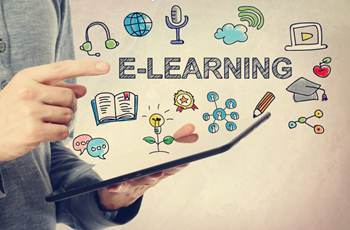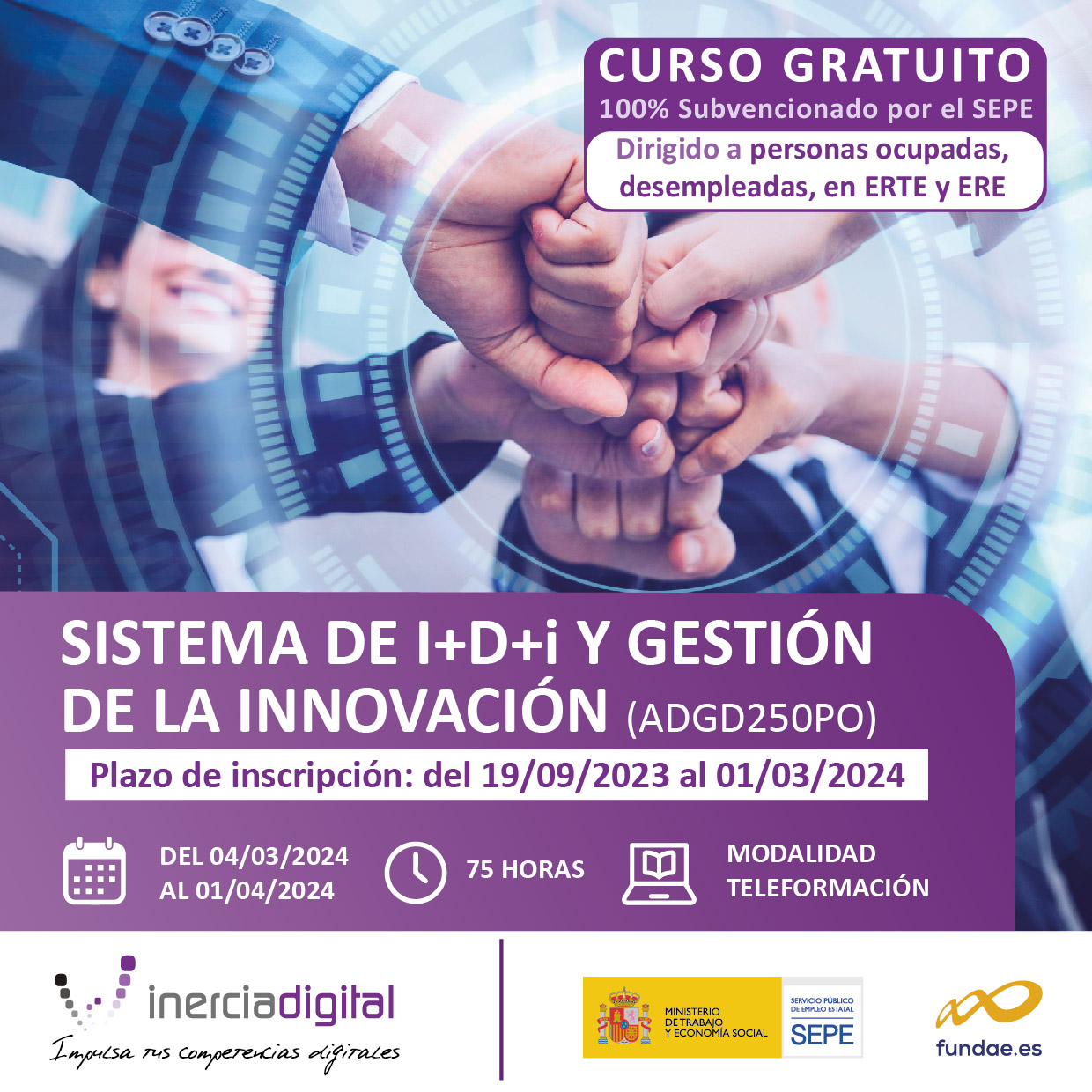e- Learning vs b- Learning
El e-learning o aprendizaje electrónico es un término que se refiere a la educación a distancia a través de Internet. Es una formación completamente virtualizada que permite la interacción del usuario con la asignatura mediante herramientas com o correo electrónico, foros, mensajería instantánea, redes sociales o plataformas diseñadas específicamente con esa finalidad.
o correo electrónico, foros, mensajería instantánea, redes sociales o plataformas diseñadas específicamente con esa finalidad.
Aunque literalmente el término significa aprendizaje “mezclado”, el b-learning (blended learning) se refiere al aprendizaje semipresencial. Es un proceso didáctico que conjuga el uso del e-learning con formación presencial.
Sin embargo conviene quedarse con una idea principal: el b-learning no es una mera mezlca de un sistema tradicional con uno moderno. A pesar de su nombre literal, el b-learning puede -y debe- utilizar las tecnologías de la información para sacar el máximo rendimiento de ambos modelos. El resultado obtenido debe ser una formación que facilite tanto la actividad del formador como del alumno, y que viabilice un aprendizaje lo más completo posible.
VENTAJAS DEL E-LEARNING
Las ventajas que aporta el e-learning se sustentan en la combinación de los principios pedagógicos con los tecnológicos. Es un apretón de manos entre la tecnología educativa y la tecnología de la información y la comunicación (TIC). Los elementos tecnológicos como el diseño, la posibilidad de personalización, la constante actualización y el fomento de la comunicación potencian en gran medida los aspectos pedagógicos, que trabajan directamente con los contenidos. Las principales ventajas del e-learning, sin embargo, son las que dependen de los elementos tecnológicos:
-La rentabilidad: gracias al ahorro en material didáctico físico y al alojamiento.
-La accesibilidad: los usuarios pueden acceder al contenido desde cualquier punto de conexión a Internet y desde cualquier soporte (ordenador, Tablet, móvil…).
-La flexibilidad: no es obligatorio que haya un grupo mínimo de usuarios para que el servicio funcione.
-La productividad: gracias al aprovechamiento del tiempo que permiten las características anteriores.
VENTAJAS DEL B-LEARNING
El principal reto que afronta este modelo es el de encontrar un equilibrio entre la formación virtual y la presencial. Ahí recae también su principal ventaja. La efectividad del aprendizaje es mucho mayor que la del e-learning cuando el equilibrio es adecuado.
El b-learning puede conjugar también el m-learning (movil learning) y el e-tutoring (tutorías). Este último concepto, aunque relacionado con la formación virtual, puede ser aplicado perfectamente en ambientes presenciales. Además de las ventajas que ofrece el e-learning, el b-learning ofrece los siguientes beneficios:
-Promueve el trabajo en equipo mediante la constante comunicación.
-Reafirma el conocimiento teórico adquirido gracias a la parte práctica.
-Fomenta el trabajo autónomo gracias al refuerzo del e-tutoring.
-Flexibiliza la forma de interiorizar conocimientos por parte del usuario gracias a la variedad de modelos incluidos.
Más información sobre estos modos de enseñanzas aquí:
B- Learning : http://elearning.ciberaula.com/articulo/blearning/
E- Learning: http://www.cfp.us.es/e-learning-definicion-y-caracteristicas
e- Learning vs b- Learning
E-learning is a term that refers to distance education through the Internet. It is a fully virtualized training that allows the user to interact with the subject using tools such as e-mail, forums, instant messaging, social networks or platforms specifically designed for this purpose.
Although literally the term would mean «blended» learning, b-learning (blended learning) refers to blended learning. It is a didactic process that combines the use of e-learning with face-to-face training.
However, it is important to keep one main idea: b-learning is not a mere mix of a traditional system and a modern one. Despite its literal name, b-learning can – and must – use information technology to get the most out of both models. The result obtained should be a training that facilitates both the activity of the trainer and the student, and that makes possible a learning as complete as possible.
ADVANTAGES OF E-LEARNING
The advantages of e-learning are based on the combination of pedagogical and technological principles. It is a handshake between educational technology and information and communication technology (ICT). Technological elements such as design, the possibility of personalization, the constant updating and the promotion of communication greatly enhance the pedagogical aspects, which work directly with the contents. The main advantages of e-learning, however, are those that depend on the technological elements:
– The profitability: thanks to the saving in physical didactic material and to the lodging.
-Accessibility: users can access the content from any point of connection to the Internet and from any medium (computer, Tablet, mobile …).
– Flexibility: it is not mandatory that there is a minimum group of users for the service to work.
– Productivity: thanks to the use of the time allowed by the above characteristics.
ADVANTAGES OF B-LEARNING
The main challenge facing this model is to find a balance between virtual and face-to-face training. Therein lies its principal advantage. The effectiveness of learning is much greater than that of e-learning when the balance is adequate.
B-learning can also combine m-learning (mobile learning) and e-tutoring. The latter concept, although related to virtual training, can be applied perfectly in face-to-face environments. In addition to the advantages offered by e-learning, b-learning offers the following benefits:
-Provides teamwork through constant communication.
– It reaffirms the theoretical knowledge acquired thanks to the practical part.
-Supports autonomous work thanks to the reinforcement of e-tutoring.
-Flexibilizes how to internalize knowledge on the part of the user thanks to the variety of models included.
More information here:
B- Learning : http://elearning.ciberaula.com/articulo/blearning/
E- Learning: http://www.cfp.us.es/e-learning-definicion-y-caracteristicas
Xema
Latest posts by Xema (see all)
- e- Learning vs b- Learning - 01/06/2017
- TICs EN LA OFICINA - 24/05/2017
- TRELLO COMO HERRAMIENTA EN LA OFICINA - 23/05/2017





6 Respuestas
[…] tag and buying much superior ranges 5 Ways To Use Futaba To Spice Up Your Class – Class Tech e- Learning vs b- Learning Tips following all is a manner of the person and informative development plan of […]
[…] Is Talking About Advantages and Disadvantages of Socialism and Capitalism…The Simple e- Learning vs b- Learning Truth […]
[…] I Think I Understand Write My e- Learning vs b- Learning Paper for Me, Now Tell Me About Write My Paper for […]
[…] X. (2017, junio 1). e- Learning vs b- Learning. Recuperado de https://blog.inerciadigital.com/2017/06/01/e-learning-vs-b-learning/ […]
[…] X. (2017, 1 junio). e- Learning vs b- Learning. Inercia Digital. https://blog.inerciadigital.com/2017/06/01/e-learning-vs-b-learning/ […]
[…] Xema. (1, junio, 2017). E- Learning vs. b- Learning. Recuperado de: e- Learning vs b- Learning | Inercia Digital […]